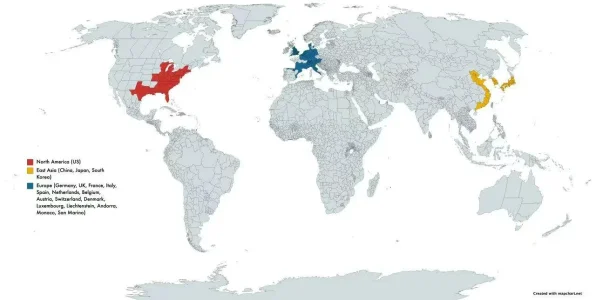If you check this graph, the more closed to trophical area, the less high GDP nations. This is where 50% world GDP generated.
View attachment 9580
Again, let me post the "Hu Line" here.

en.wikipedia.org
View attachment 9581
View attachment 9587
That's what i meant. Ur BP and UP have vast population but with lower per GDP and high temp, plus they have no seaport nearby. One Chennai is not enough.
View attachment 9582
Because they are developed, even for certain months it's hot, they have enough resouce for cooling system.
Singapore’s founding father thought air conditioning was the secret to his country’s success
Vox is a general interest news site for the 21st century. Its mission: to help everyone understand our complicated world, so that we can all help shape it. In text, video and audio, our reporters explain politics, policy, world affairs, technology, culture, science, the climate crisis, money...

www.vox.com
China also has some hot weahter lasts for 1 or 2 months, but India lasted almost a quarter or even more.

en.wikipedia.org
You should know that, in any modern industry, hot temp is the killer for machine's precious on operating, and coolinig system cost would be crucial part of total cost if you desgined for full time.
Plus, India is lack of stable power grid and cheap energy resource like gas and oil. If setting up a factory, workig condition both on manchine and employee always be a big factor.
This is my lab, this summer the temp was also 35 degree something, since the place is 12 meter's high, we counldn't install any cooling system as whole on industry level, if so we need to spend half million of USD.
The only solution was we building studio inside, but still spent lots of many on home-use level ACs and contruction on studios.
View attachment 9583
View attachment 9584
View attachment 9585
View attachment 9586
This is why i think as the global warning is trend, and India suffered more than other places with massive population, any manufactures would cost more and more, might be India would never get any cost competitiveness over China even you have more population and lower salary, finally low manufacture means low GDP.
That's my point, welcome to debate.































